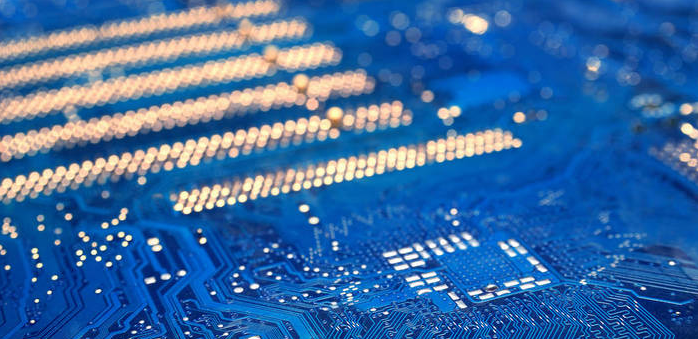PCB material selection is the first step in the PCB design process. Choosing the right material for your design is very important because it affects the overall performance of the circuit board.
Before choosing to start, there are many factors to consider. Ensure that the material properties meet your specific board requirements and end applications.
One of the main problems we face when manufacturing PCBs is that designers often rely too much on material data sheets. The data sheet provides designers with a comprehensive description of the electrical properties of the material. However, when considering various real-world manufacturing issues, data sheets are insufficient, and real-world manufacturing issues are important because they affect output and cost.
In this blog post, we will focus on the following points:
Printed circuit board materials:
PCB material: copper clad laminate
Use the following 3 items to manufacture printed circuit boards:
Prepreg: B-stage material, which is sticky and allows the bonding of different laminates or foils.
Copper foil: conductive traces on the PCB.
Copper Clad Laminate (core material): Laminated and cured by prepreg and copper foil.

PCB materials: foil, core and prepreg
How to choose a PCB laminate?
The PCB laminate is made of dielectric material. When choosing a PCB laminate, we need to consider some of the key characteristics of the dielectric material used. These attributes include:
Thermal performance Electrical characteristics
Glass transition temperature (Tg) Dielectric constant (Dk)
Decomposition temperature (Td) loss tangent or loss factor (Tan δ or Df)
Thermal conductivity (k)
Coefficient of Thermal Expansion (CTE)
Glass transition temperature (Tg): As the polymer chains become easier to move, the temperature at which the PCB substrate changes from a glassy, rigid state to a softened, deformable state. Tg is expressed in degrees Celsius (ºC).
Glass transition temperature (Tg)
370 Human Resources
180°C
Rogers 4350B 280°C
Decomposition temperature (Td): The temperature at which a material undergoes chemical decomposition. SI unit: Celsius.
Decomposition temperature (Td)
370 Human Resources
340°C
Rogers 4350B 390°C
Thermal conductivity (k): The property of a material to conduct heat; low thermal conductivity means low heat transfer, and high conductivity means high heat transfer. SI unit: Watt/meter Kelvin.
Thermal conductivity (k)
370 Human Resources
0.4 W/m
Rogers 4350B 0.69 W/m
Coefficient of Thermal Expansion (CTE): The expansion rate of PCB material when heated. CTE is expressed in parts per million (ppm) per heating degree Celsius. SI unit: PPM/°C.
When the temperature of the material rises above Tg, the CTE also rises.
The CTE of the substrate is usually much higher than that of copper, which can cause interconnection problems when the PCB is heated.
The CTE for the X and Y axes is usually low-about 10 to 20 ppm per degree Celsius. This is usually due to the woven glass that constrains the material in the X and Y directions. Even if the temperature of the material rises above Tg, the CTE will not change much. So the material must expand in the Z direction.
The CTE along the Z axis should be as low as possible; the goal is to be less than 70 ppm per degree Celsius, which will increase as the material exceeds the Tg.
The expansion of a material is measured by the coefficient of thermal expansion (CTE). This figure shows the CTE in the Z direction. To learn more about PCB material thermal considerations, please read our article What is thermal analysis in PCB assembly
Coefficient of Thermal Expansion (CTE)
370 Human Resources
X 13 ppm/°C
Y 14 ppm/°C
Z 45 ppm/°C
Rogers 4350B X 10 ppm/°C
Y 12 ppm/°C
Z 32 ppm/°C
Permittivity (Dk) or Relative Permeability (Er): The ratio of the permittivity of a material to the permittivity of free space (ie, vacuum). It is also called relative permeability.
The data sheet applies to the specific (usually 50%) resin content percentage in the material. The actual percentage of resin in the core material or prepreg varies from composition to composition, so Dk will vary. The percentage of copper and the thickness of the extruded prepreg will ultimately determine the height of the medium.
Most of the used PCB materials have Er in the range between 2.5 and 4.5. In certain microwave applications, materials with higher Er values are also used. It usually decreases as the frequency increases.
Dielectric constant (Dk) or relative permeability (Er)
370 Human Resources
3.92 @50% resin content
Rogers 4350B 3.48
Loss tangent (tanδ) or loss factor (Df): Loss tangent or loss factor is the tangent of the phase angle between the resistive current and the reactive current in the dielectric. The dielectric loss increases as the value of Df increases. A low Df value results in a "fast" substrate, while a large value results in a "slow" substrate. Df increases slightly with frequency; for high-frequency materials with a very low Df value, it changes very little with frequency. The value range is from 0.001 to 0.030.
Loss tangent at 10 GHz 370 Human resources 0.0250 Rogers 4350B 0.0037
Signal loss and operating frequency
Signal loss includes dielectric loss and copper loss.
Dielectric loss is part of the total signal loss: dielectric materials are composed of polarized molecules. These molecules vibrate in the electric field created by the time-varying signal on the signal trajectory. This heats up the dielectric material and causes dielectric loss as part of the signal loss. The signal loss increases with frequency. This loss can be minimized by using materials with lower dissipation factors. To understand the signal performance of PCB traces